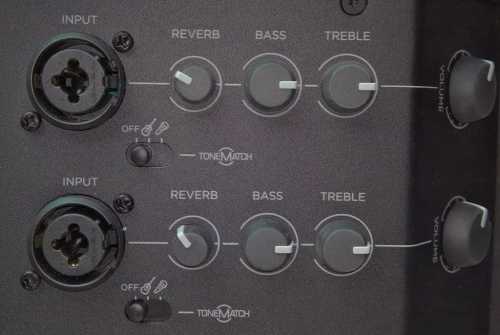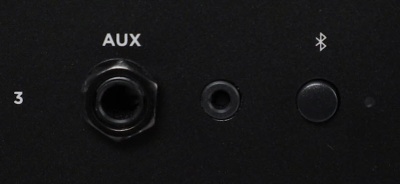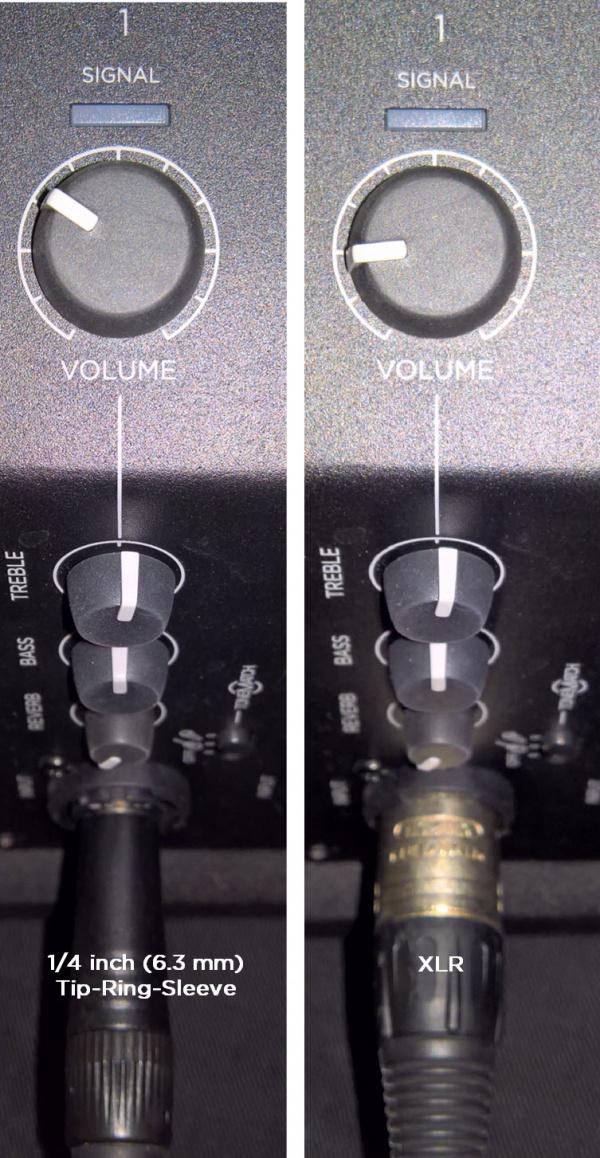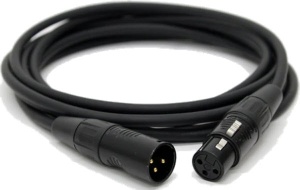Difference between revisions of "Template:S1 Pro with External Device"
m (→Gain Staging) |
m (→Alternate Connection) |
||
| (2 intermediate revisions by the same user not shown) | |||
| Line 1: | Line 1: | ||
<noinclude> | <noinclude> | ||
| − | + | ||
'''Bold text'''==Usage== | '''Bold text'''==Usage== | ||
| + | |||
<nowiki>{{</nowiki>'''S1 Pro with External Device''' | <nowiki>{{</nowiki>'''S1 Pro with External Device''' | ||
| + | |||
|'''TargetDevice=''' ''name of the second S1 Pro'' | |'''TargetDevice=''' ''name of the second S1 Pro'' | ||
| + | |||
|'''Device=''' ''name of the device'' | |'''Device=''' ''name of the device'' | ||
| Line 40: | Line 43: | ||
{{S1 Pro Combo Inputs}} | {{S1 Pro Combo Inputs}} | ||
| + | |||
| + | |||
| + | === Alternate Connection === | ||
| + | You can use an XLR cable (mic cable) from a Line Level Source (e.g., L1 Pro, S1 Pro+) to {{{TargetDevice|S1 Pro or S1 Pro+}}} channels 1 or 2 (XLR inputs), but the signal may clip, overload, or be too high to control the volume. To attenuate (reduce) the signal, use a -20 dB or -30 dB [[Pad]] | ||
| + | |||
| + | XLR Cable | ||
| + | |||
| + | [[File:XLR cable.jpg|300px]] | ||
| + | |||
| + | [[Pad]] | ||
| + | |||
| + | [[File:Pad.jpg|link=Pad|More about Pads]] | ||
| + | |||
| + | Click image for more information about Pads | ||
<!-- | <!-- | ||
== Alternative: S1 Pro Aux Input == | == Alternative: S1 Pro Aux Input == | ||
Latest revision as of 15:28, 30 July 2024
Bold text==Usage==
{{S1 Pro with External Device
|TargetDevice= name of the second S1 Pro
|Device= name of the device
|discussion page = link to forum discussion (optional) e.g. discussion in the Bose Message Board
}}
Template will render as it appears below this line.
On the S1 Pro System, for each channel you are connecting to the {{{Device}}} use these settings while you are setting up.
- Reverb OFF
- Bass at 12:00 o'clock
- Treble at 12:00 o'clock
- ToneMatch switch OFF
You can adjust the Reverb, Bass, and Treble after you get your basic sound working.
- S1 Pro+
You can also connect to the Channel 3 Aux input. For best results, use a 1/4 inch (6.3 mm) Tip-Ring-Sleeve cable.
Contents
Gain Staging
- Using a Bose device as the source
When connecting a ToneMatch Mixer[1] or an S1 Pro System Line Out to an S1 Pro System channel 1 or channel 2
Set the volume control to 10:00 o'clock with 1/4 inch (6.3 mm) Tip-Ring-Sleeve
- The signal strength from a ToneMatch Mixer[1] or an S1 Pro System Line Out is sufficient to achieve the maximum usable volume from the S1 Pro System
- Control the overall volume from the ToneMatch Mixer[1] or the first S1 Pro System. If you use an XLR cable, set the volume control to 9:00 o'clock
- Using a third-party source (not a Bose device as the source)
For each channel you are using on the S1 Pro System
- Turn the channel volume off
- Connect your sound source
- Adjust the volume of the source device output to the reference or nominal output level.
- On analog consoles this may be marked as unity or 0 dB.
- On digital consoles this may be marked as -18 dBFS[2][3]. The exact value (-18 dBFS to -20 dBFS) may vary depending your location[4].
- Refer to the manual for the source device for details.
- If the source device does not have metering or indicators, set the output as high as you can without hearing distortion or seeing red indicator lights.
- While playing/singing as loud as you will during your performance, bring up the channel volume until you see solid green on the channel indicator light. Occasional flickers of red are okay. If you see solid red or you hear distortion, turn down the volume.
Combo Inputs
- S1 Pro Channels 1 and 2 have combo inputs that accept
- XLR (balanced mono)
- Microphone or Line-Level inputs
- 1/4 inch (6.3 mm) Tip-Ring-Sleeve connection (balanced mono)
- Line-Level inputs
- 1/4 inch (6.3 mm) Tip-Sleeve connection (unbalanced mono)
- Line-Level inputs and instruments (e.g. guitars, keyboards, guitar processors, loopers)
- When using a third-party device (e.g., mixer or another line-level source) should I use the XLR or 1/4 inch inputs?
- The S1 Pro 1/4 inch Tip-Ring-Sleeve inputs are best suited for line-level balanced inputs. This is a better match for the signal level.
- The S1 Pro XLR inputs are best suited for microphones.
When the S1 Pro Channel input lights hit red or you hear distortion, the signal is clipping and you've reached the maximum usable volume. From the source, if the XLR outputs are line-level and the 1/4 inch Tip-Ring-Sleeve outputs are line-level, it won't matter which type of cable you use. They'll both get the job done, although the volume control setting will be lower with the XLR connection. That doesn't indicate more headroom. The maximum usable volume is the same either way.
Alternate Connection
You can use an XLR cable (mic cable) from a Line Level Source (e.g., L1 Pro, S1 Pro+) to S1 Pro or S1 Pro+ channels 1 or 2 (XLR inputs), but the signal may clip, overload, or be too high to control the volume. To attenuate (reduce) the signal, use a -20 dB or -30 dB Pad
XLR Cable
Click image for more information about Pads
Connecting a Mixer to an S1 Pro system
Article from Bose Connecting an S1 Pro to a mixer



